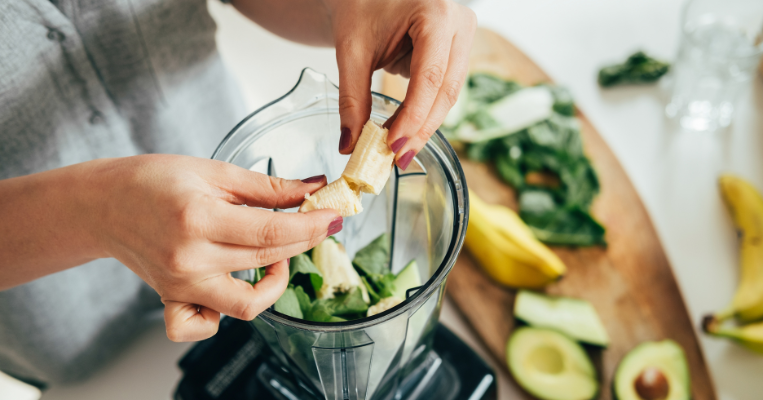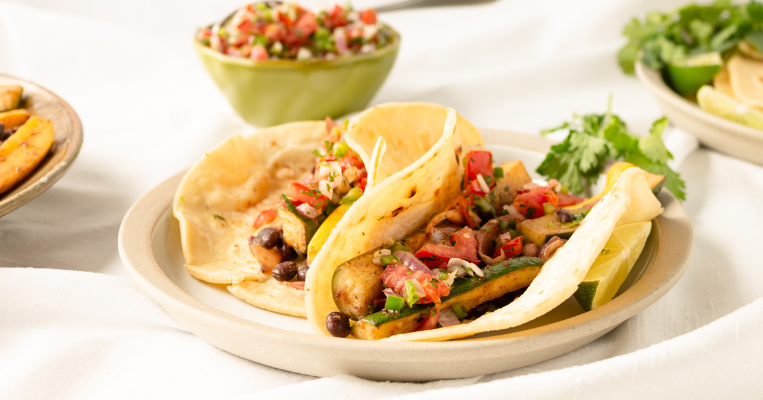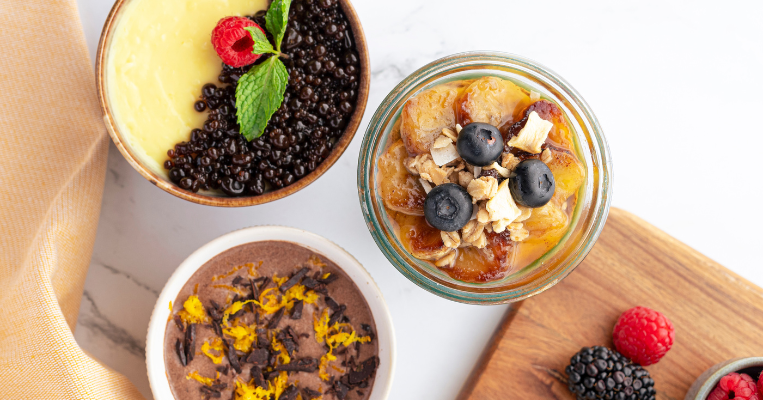
25 January 2023
My Top 3 Vegan Blender Recipes
Under the assumption that plant-based diets are challenging? Not with these flavoursome vegan blender recipes!
It’s been three years since I embarked on my journey into veganism, having already spent many years as a vegetarian. TAs my journey into self-discovery and spirituality deepened, I found that veganism was the most ethical choice for my body, my mind and the planet. Not only has my mental and physical health improved, but consuming a plant-based diet has drastically cut my carbon footprint and greenhouse gas emissions.
I initially thought the transition would be difficult since there’s a popular notion that plant-based diets are boring and bland, but that could not be further from the truth. Since committing myself to veganism, I’ve discovered an abundance of simple, yet delicious recipes. With these vegan blender recipes, it’s never been easier to rustle something up in the kitchen.
It’s inspired me to blend my own creations, where I’ve made everything from side dishes and desserts to dips and sauces with just a handful of ingredients.
Here are my top three vegan blender recipes for you to try.
Beetroot Hummus
A twist on the traditional recipe, this beetroot hummus is a tasty addition to any meal. Beetroots are a great source of nutrition too; they’re filled with fibre, iron and vitamin C. Plus, they’re great for improving blood flow making this hummus ideal for a post-workout snack.
Ingredients:
1 cup of chickpeas
1 cup of beetroot
Lemon juice
Tahini
Olive oil
Salt and pepper
Method:
First blend the chickpeas and lemon juice until the texture is smooth, then add the beetroot and tahini along with olive oil and season with salt and pepper to taste.
You can follow along with my how-to video here!

Banana Ice Cream
I often find that vegan ice cream can be really expensive and full of unhealthy additives, so I thought why not try making some at home? The most appealing part about this vegan blender recipe is how versatile it is – just swap out the banana for a fruit of your choice to mix it up.
Ingredients:
2 frozen bananas
50 ml plant-based milk
2 tsp vanilla essence
Ice
Method:
To make this delicious dessert, all you need to do is pop the ingredients into the blender and turn it on. It’s that simple! Tip it out into a bowl and feel free to add any toppings of your choice.
Check out my how-to video here!

Vegan Pesto
This vegan pesto recipe is amazing for meal prepping as it can stay in the fridge for a few days. Use it as a dip, with pasta or even in sandwiches and salads. It’s an incredibly healthy alternative, too! The avocado is especially filled with vitamins, fibre and monounsaturated fats.
Ingredients:
Half an avocado
Handful of fresh basil
Handful of pine nuts
Vegan cheese
2 tbsp olive oil
Pinch of Himalayan salt
Black pepper
Method:
This vegan blender recipe calls for half an avocado, fresh basil, vegan cheese, and pine nuts. Add to the blender along with the olive oil, lemon juice, a pinch of Himalayan salt and black pepper. Blend until the texture is smooth and consistent – the perfect sauce for pasta and pizza dishes.
Watch my how-to video here!

I’ve discovered that being vegan doesn’t mean foregoing your favourite recipes – it just means you need to be creative. It’s never been easier (and tastier) to transition to a plant-based diet, with lots of vegan-friendly ingredients readily available in most supermarkets, making it more accessible for everyone.
And fortunately, there are lots of incredible vegan food blogs out there to follow, including Pick Up Limes and From My Bowl. My personal journey has become an immense source of inspiration for me too, leading me to create my own vegan food venture, Plant Essence.
If you’re curious to learn more about the health side of plant-based diets, read my blogs on macro and micro nutrition. Or, if you have any questions that you’d like to ask me about the topic, please feel free to get in touch!








